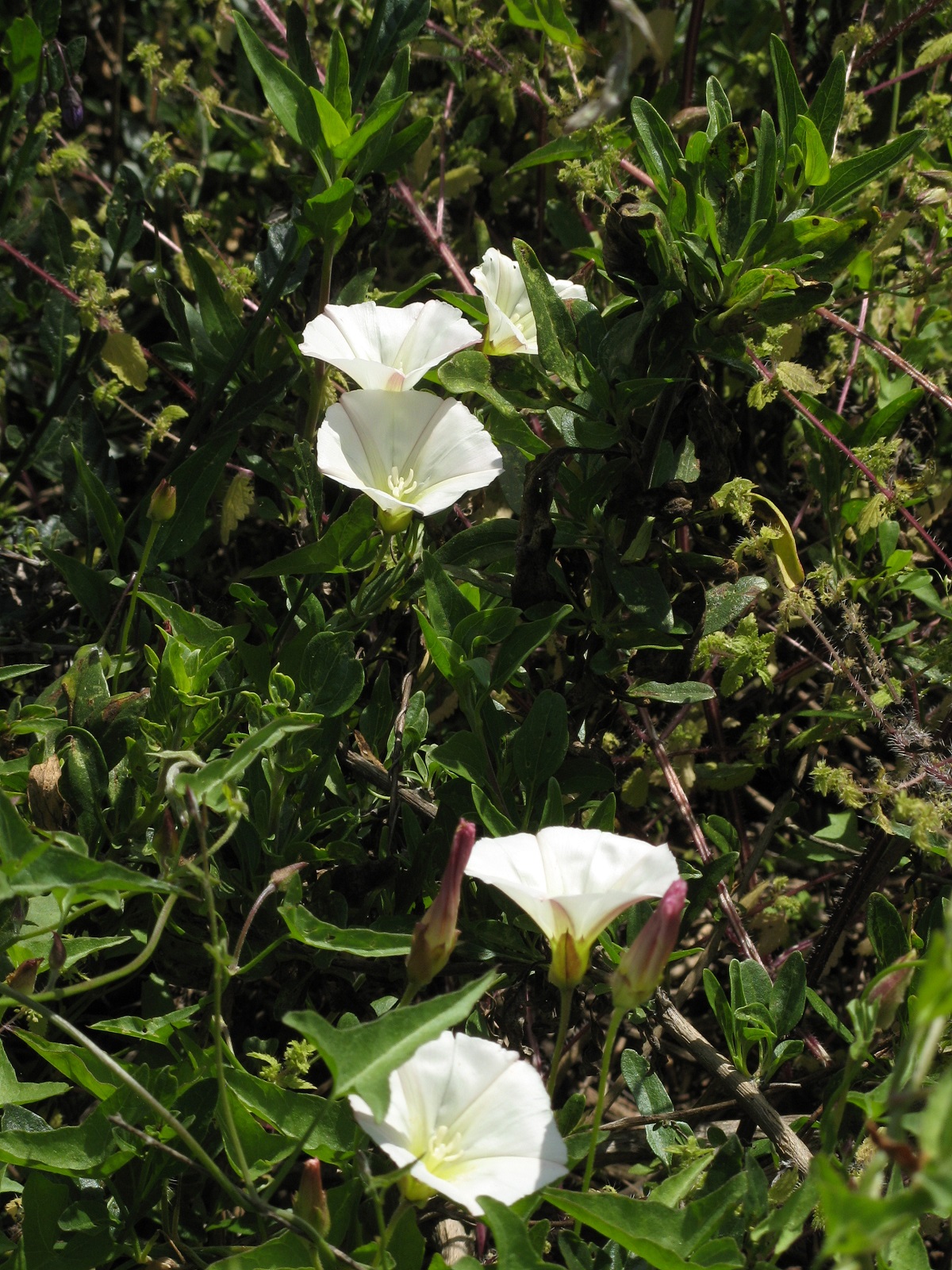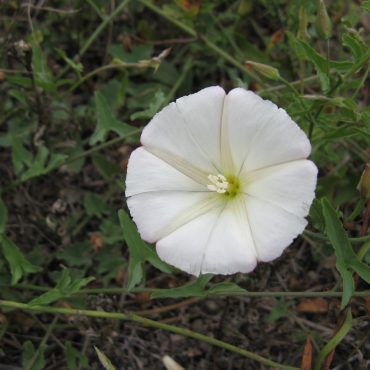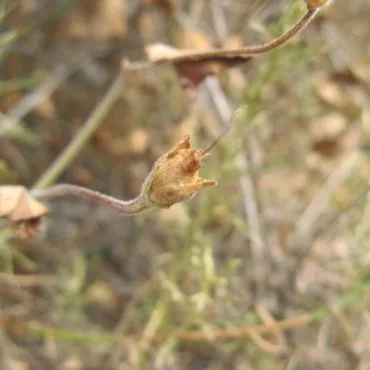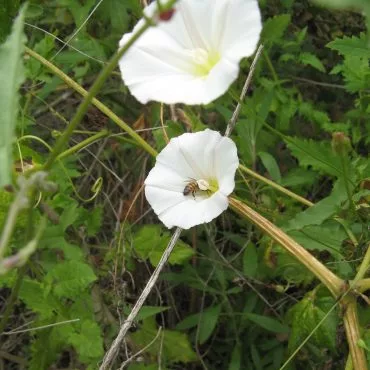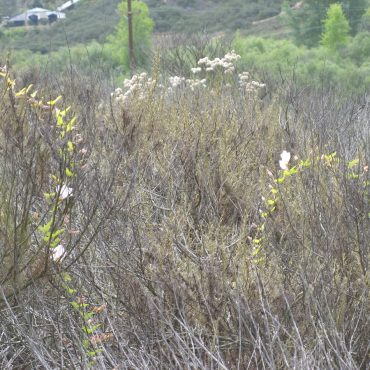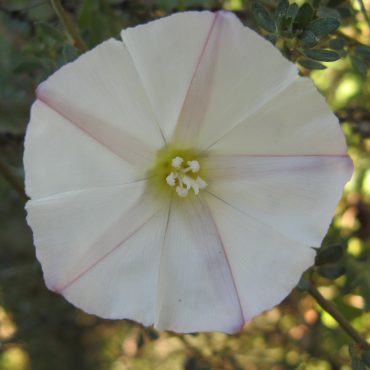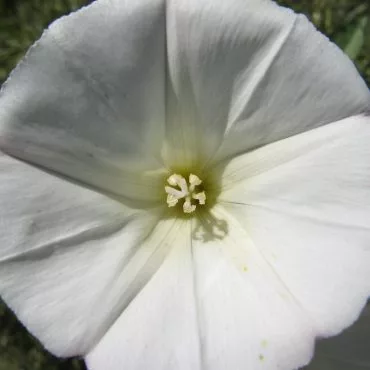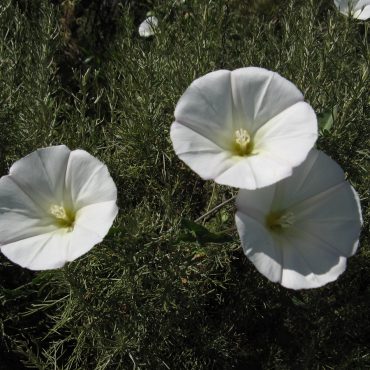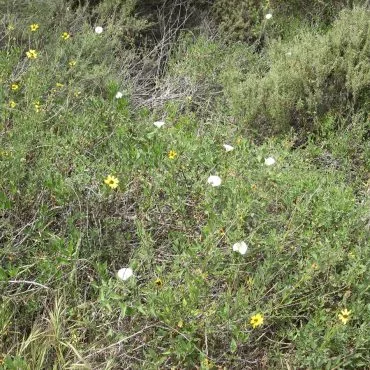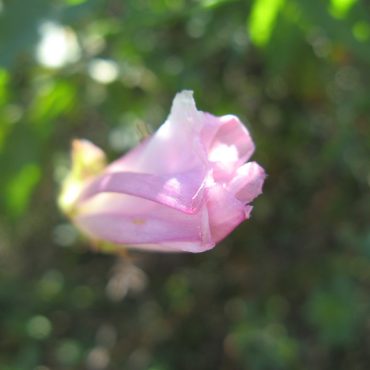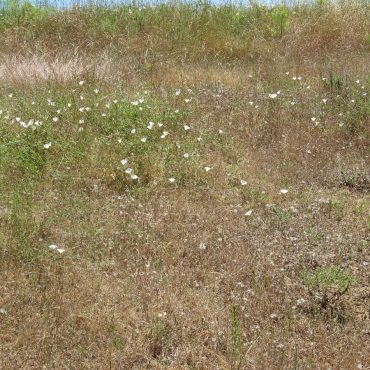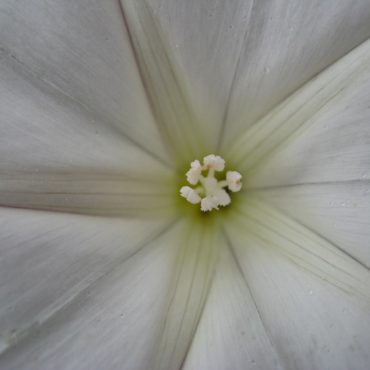Wild morning glory (Calystegia macrostegia) is a native vine that twists its stems around and among the plants of the coastal sage scrub and chaparral, or twines itself together into a flower sprinkled carpet. The bright green arrow-shaped leaves and showy white trumpet-shaped flowers decorate the most nondescript vegetation.
Wild morning glory is native only to the Channel Islands, coastal southern California and Baja California.
Wild morning glory is often called false-bindweed because of its resemblance to the non-native bindweed, considered one of the worst weeds in California. Flowers of the native species are carried on leafless stems, while the flower stems of the invasive look-alike are shorter and have a pair of small leaves (bracts) midway along the them.

